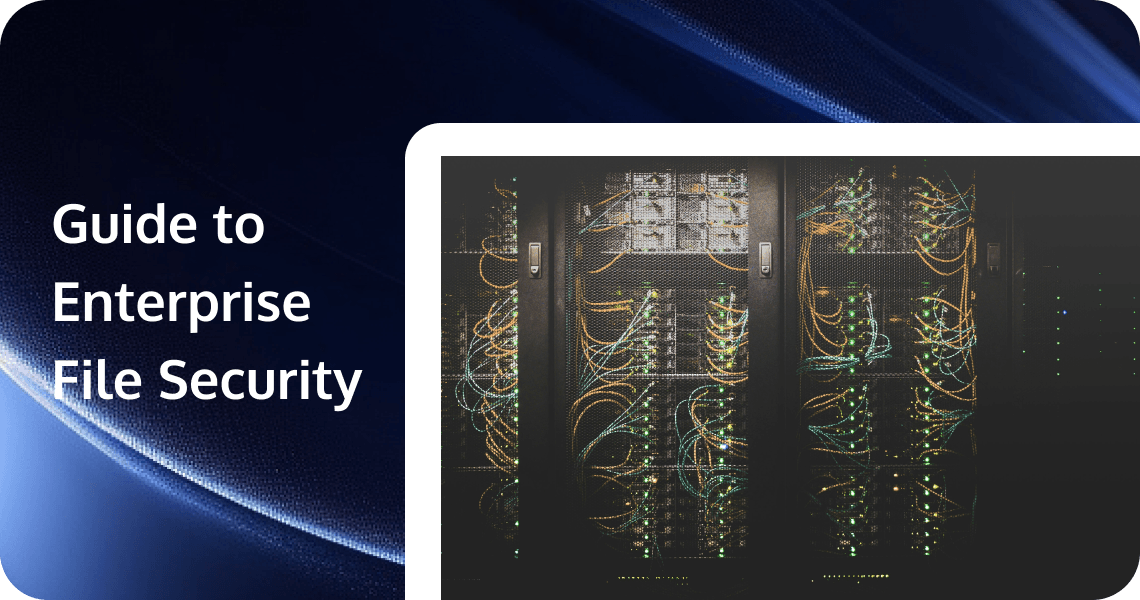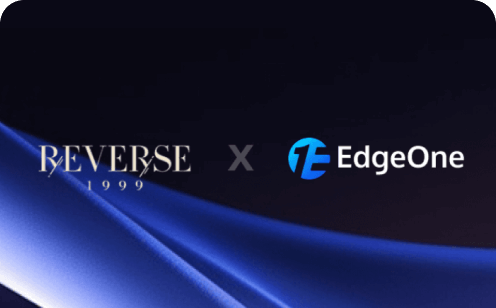Enterprise File Security: Comprehensive Strategies for Protecting Critical Business Data in the Digital Age

In the digital era, the backbone of any organization is its data. Enterprise file security is not just a technical necessity but a strategic imperative. With the increasing reliance on digital platforms, the potential for data breaches and cyber threats has never been higher. This article delves into the importance of enterprise file security, explores key strategies to safeguard data, and examines the role of advanced technologies and solutions in ensuring compliance and mitigating risks.
Understanding Enterprise File Security
Enterprise file security encompasses the measures and technologies used to protect sensitive information from unauthorized access, loss, or corruption. Unlike consumer file sharing, which focuses on convenience, enterprise solutions prioritize security and compliance. These platforms must handle large volumes of data, support multiple users, and integrate seamlessly with existing IT infrastructure while maintaining the highest levels of security.
Key Components of Enterprise File Security
- Encryption: Encryption is the cornerstone of file security. It ensures that data is unreadable without the proper decryption keys, protecting information both at rest and in transit. Advanced encryption algorithms, such as AES-256, provide robust protection against even the most sophisticated attacks.
- Access Controls: Effective access control is crucial for managing who can view, edit, or share files. Role-based access control (RBAC) assigns permissions based on job functions, ensuring that users only have access to the data they need. Permission management allows administrators to grant or revoke access as needed, maintaining a tight control over data access.
- Secure File Sharing: Secure file sharing features, such as expiring links and password protection, add an extra layer of security. These features prevent unauthorized access and ensure that sensitive information is only shared with intended recipients.
- Endpoint Security: Endpoints, such as laptops and mobile devices, are often the weakest link in security. Endpoint security solutions protect these devices from malware, phishing attacks, and other cyber threats. Regular updates and patches are essential to keep endpoints secure.
- Cloud Security: Cloud environments offer flexibility and scalability, but they also introduce new security challenges. Ensuring compliance with industry standards, such as GDPR or HIPAA, and implementing cloud-specific security measures, such as identity and access management (IAM), are critical for protecting data in the cloud.
- Dark Web Monitoring: The dark web is a breeding ground for cybercriminals. Dark web monitoring services detect breaches and compromised credentials, allowing organizations to take proactive measures to prevent further risks.
Evolution of Enterprise File Security Challenges
Enterprise security has undergone a paradigm shift from traditional perimeter-based approaches to data-centric security models. Where organizations once focused primarily on fortifying network boundaries, the dissolution of clearly defined perimeters has necessitated security that follows data wherever it travels. Key challenges in the modern security landscape include:
1. Distributed Workforce Security Gaps
The widespread adoption of remote work models has accelerated this transition, with company data now regularly accessed from home networks, public Wi-Fi, and personal devices. This distributed workforce creates security blind spots and expands the threat surface exponentially. According to recent surveys, 67% of organizations report significant increases in security incidents since transitioning to remote work models.
2. Complex Regulatory Requirements
Simultaneously, the regulatory landscape has grown increasingly complex. From GDPR in Europe to CCPA in California and industry-specific frameworks like HIPAA and PCI DSS, organizations must navigate a maze of overlapping and sometimes contradictory compliance requirements regarding data protection.
3. Shadow IT Proliferation
Further complicating matters is the proliferation of shadow IT—unauthorized applications and services used by employees for file sharing and collaboration. Studies indicate that enterprises typically underestimate their cloud application usage by 10x, with the average organization using over 1,200 cloud services, many without IT's knowledge or security vetting.
Advanced Security Technologies
1. Cloud Access Security Brokers (CASBs)
Cloud Access Security Brokers (CASBs) have emerged as critical control points for cloud service usage, providing visibility into shadow IT, enforcing security policies, and ensuring compliance across cloud environments. These solutions sit between users and cloud services, monitoring activity and enforcing security policies regardless of device or location.
2. Zero Trust Architecture Elements
Zero Trust architectures have gained prominence as a security model for file access, operating on the principle of "never trust, always verify." This approach treats every access request as potentially malicious, requiring continuous verification regardless of whether the request originates from inside or outside traditional network boundaries.
3. AI and Machine Learning Applications
AI and machine learning technologies are increasingly embedded in security solutions, enabling more sophisticated threat detection through pattern recognition and behavioral analysis. These systems can identify subtle indicators of compromise that would elude rule-based detection systems, such as unusual file access patterns that may indicate account compromise or insider threats.
4. Secure Collaboration Platforms
Secure collaboration platforms have evolved to balance security with usability, incorporating features like end-to-end encryption, granular permissions, automatic expiration, and digital rights management. These tools enable productive teamwork while maintaining control over sensitive information.
5. Blockchain for File Security
Some organizations are exploring blockchain applications for securing critical files, leveraging distributed ledger technology to create immutable audit trails and verify file integrity. While still emerging, these approaches show promise for scenarios requiring tamper-evident document handling.
Best Practices for Enterprise File Security
1. Risk Assessment and Prioritization
Successful enterprise file security begins with comprehensive risk assessment and prioritization. Organizations should identify their most valuable data assets (crown jewels) and understand the specific threats they face based on industry, geography, and business model. This enables security teams to allocate resources effectively rather than pursuing a one-size-fits-all approach.
2. Creating Defensible Security Policies
Creating defensible security policies requires balancing protection with usability. Overly restrictive policies often lead to workarounds that create greater security risks. Effective policies are clear, contextual, and consistently enforced through both technological controls and organizational processes.
3. Employee Training Components
Employee training remains one of the highest ROI security investments. Regular awareness programs should educate staff about secure file-handling practices, recognizing social engineering attempts, proper usage of approved collaboration tools, and incident reporting procedures. Training should be reinforced through simulated phishing exercises and other practical scenarios.
4. Security Automation Opportunities
Security automation and orchestration reduce manual intervention requirements while accelerating response times. By automating routine security tasks—such as permission reviews, classification verification, and access monitoring—organizations can improve consistency while allowing security teams to focus on more complex challenges.
5. Incident Response Planning Elements
Comprehensive incident response planning that specifically addressing file breaches enables organizations to react swiftly when security incidents occur. These plans should include specific procedures for containing compromised files, assessing exposure, meeting notification requirements, and preserving forensic evidence.
Compliance and Regulatory Considerations
1. Global Data Protection Regulations
Global data protection regulations have created complex compliance requirements for file security. The European Union's GDPR imposes strict controls on personal data handling with potential penalties reaching 4% of global revenue. The California Consumer Privacy Act (CCPA) and similar emerging state regulations create a patchwork of requirements across the United States, while countries like Brazil (LGPD) and China (PIPL) have implemented their own comprehensive frameworks.
2. Industry-Specific Requirements
Industry-specific requirements add additional layers of compliance complexity. Healthcare organizations must adhere to HIPAA's strict provisions around protected health information, financial institutions must comply with regulations including PCI DSS and SOX, while government contractors face requirements ranging from CMMC to FedRAMP.
3. Audit Requirements
Maintaining comprehensive audit trails and documentation is essential both for regulatory compliance and for internal security governance. File access logs, policy changes, administrative actions, and security incidents must be recorded in tamper-resistant systems and preserved according to relevant retention requirements.
4. Third-Party Risk Management
Third-party access presents particular risks, as external partners often require access to sensitive internal files. Organizations should implement specialized controls for these scenarios, including separate authentication systems, limited-time access grants, watermarking, and enhanced monitoring for external users with access to sensitive information.
Measuring Security Effectiveness
Establishing key performance indicators for file security enables continuous improvement and demonstrates security program value. Effective metrics include:
- Time to detect and contain file-related security incidents
- Percentage of sensitive files with appropriate controls
- Rate of policy exceptions and violations
- User satisfaction with security processes
- Time required for security reviews and approvals
Regular security testing should evaluate the effectiveness of file security controls. This includes penetration testing to identify potential access paths to sensitive documents, red team exercises simulating targeted attacks, and control validation testing to ensure security mechanisms function as intended.
Continuous improvement frameworks enable organizations to systematically enhance security postures over time. Approaches like the NIST Cybersecurity Framework provide structured models for assessing current capabilities and developing roadmaps for improvement.
Calculating the ROI of enterprise file security investments remains challenging but essential. Forward-thinking organizations focus on metrics like reduced incident costs, efficiency gains from automation, compliance penalty avoidance, and the business value of maintaining customer and partner trust.
Future Trends and Emerging Technologies
Quantum Computing Implications
Quantum computing poses both threats and opportunities for file security. While quantum algorithms may eventually break current encryption standards, quantum-resistant cryptographic approaches are already being developed. Organizations should begin assessing their quantum readiness, particularly for data with long-term confidentiality requirements.
Homomorphic Encryption Benefits
Homomorphic encryption represents a promising technology that allows computation on encrypted data without decryption. Though currently limited by performance constraints, advances in this field could fundamentally transform secure data processing, allowing organizations to leverage cloud computing resources for sensitive data analysis without exposure risks.
Decentralized Storage Advantages
Decentralized storage architectures offer new approaches to file security by distributing encrypted file fragments across multiple locations, eliminating single points of failure or compromise. These systems can provide enhanced resilience against both outages and targeted attacks.
Adaptive Security Architecture Features
Adaptive security architectures that continuously adjust controls based on risk assessments are gaining traction. These systems dynamically modify security requirements based on contextual factors, providing greater protection for high-risk scenarios while reducing friction in lower-risk situations.
How to Protect Your Data with Tencent EdgeOne
Tencent EdgeOne is an integrated edge computing platform that combines content delivery, security, and edge computing capabilities into a unified service designed to protect organizational data. Built on Tencent Cloud's global infrastructure, EdgeOne provides comprehensive protection for web applications, APIs, and digital content while simultaneously improving performance. By routing traffic through Tencent's secure network, organizations can defend against various cyber threats without sacrificing user experience or adding complex management overhead.
Tencent EdgeOne provides comprehensive data protection through its integrated edge computing platform:
- DDoS Protection: Guards against distributed denial-of-service attacks using Tencent's global infrastructure
- Web Application Firewall (WAF): Defends against OWASP Top 10 vulnerabilities, including SQL injection and XSS
- Zero Trust Security: Implements identity-aware access controls and continuous authentication
- Global Threat Intelligence: Automatically blocks known malicious IPs and emerging threats
- Data Loss Prevention: Inspects and masks sensitive information to prevent data leakage
- Unified Management: Simplifies security through a single dashboard for monitoring and configuration
- Performance Optimization: Processes security checks at the edge to reduce latency while maintaining protection
Sign up and start a free trial with us!
Conclusion
Enterprise file security is a critical component of any organization's cybersecurity strategy. By understanding the key components, implementing best practices, and leveraging advanced technologies, organizations can fortify their defenses and protect their valuable data. In an increasingly digital world, prioritizing and investing in robust security measures is not just an option—it's a necessity.

